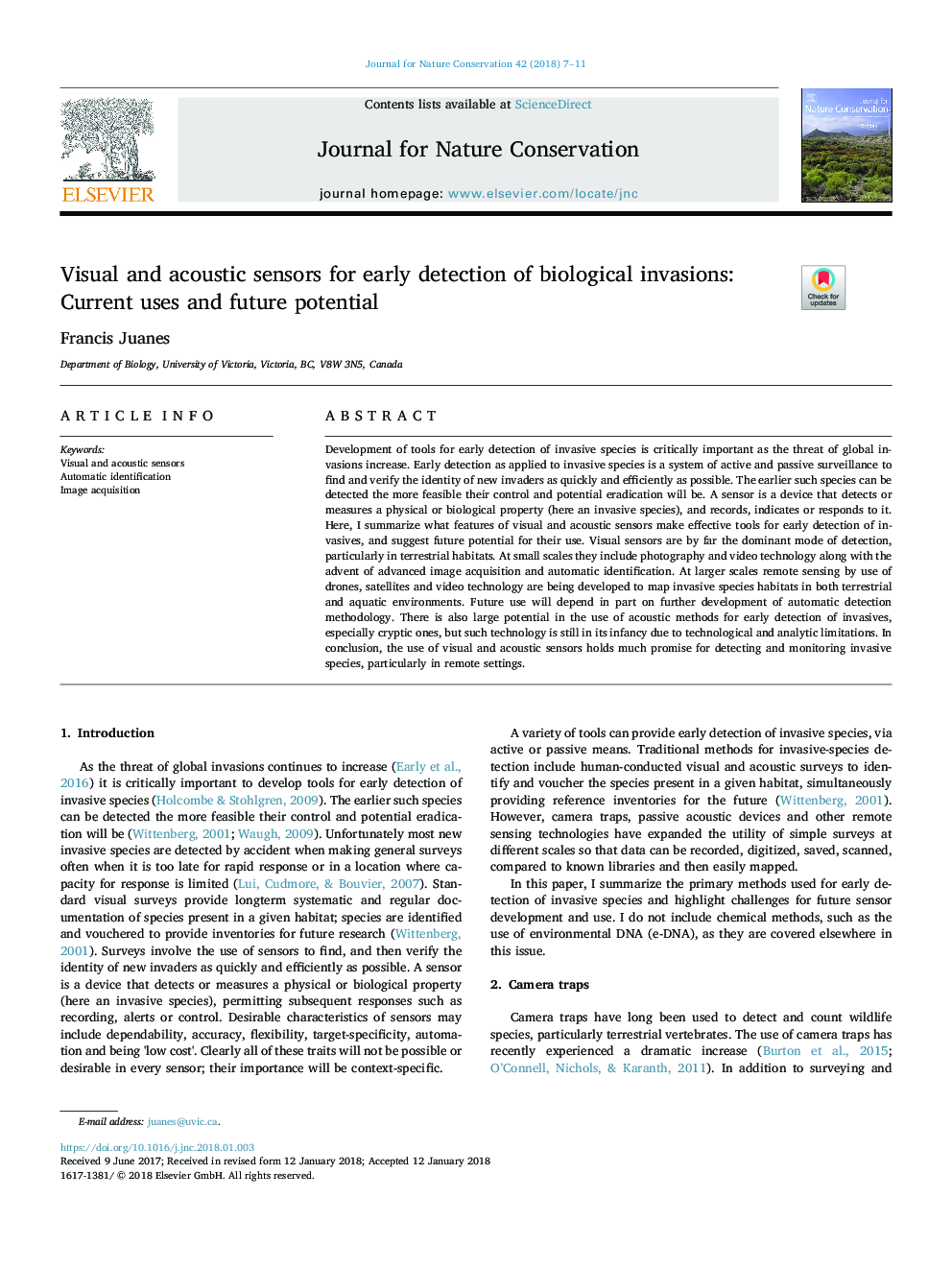| Article ID | Journal | Published Year | Pages | File Type |
|---|---|---|---|---|
| 8849305 | Journal for Nature Conservation | 2018 | 5 Pages |
Abstract
Development of tools for early detection of invasive species is critically important as the threat of global invasions increase. Early detection as applied to invasive species is a system of active and passive surveillance to find and verify the identity of new invaders as quickly and efficiently as possible. The earlier such species can be detected the more feasible their control and potential eradication will be. A sensor is a device that detects or measures a physical or biological property (here an invasive species), and records, indicates or responds to it. Here, I summarize what features of visual and acoustic sensors make effective tools for early detection of invasives, and suggest future potential for their use. Visual sensors are by far the dominant mode of detection, particularly in terrestrial habitats. At small scales they include photography and video technology along with the advent of advanced image acquisition and automatic identification. At larger scales remote sensing by use of drones, satellites and video technology are being developed to map invasive species habitats in both terrestrial and aquatic environments. Future use will depend in part on further development of automatic detection methodology. There is also large potential in the use of acoustic methods for early detection of invasives, especially cryptic ones, but such technology is still in its infancy due to technological and analytic limitations. In conclusion, the use of visual and acoustic sensors holds much promise for detecting and monitoring invasive species, particularly in remote settings.
Related Topics
Physical Sciences and Engineering
Earth and Planetary Sciences
Earth and Planetary Sciences (General)
Authors
Francis Juanes,
